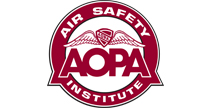What have done for me lately
(ERA11FA074)
 By David Jack Kenny
By David Jack Kenny
Few of us are brilliant natural aviators, able to rely solely on our own resourcefulness to safely explore the distant corners of the flight envelope. Mortal pilots of ordinary skill learn the virtues of widening their experience gradually. Going solo into situations far beyond your training invites a good scare that can end very badly. And the flip side of this rule is that while lifetime experience is good, recency of experience may be more relevant to any particular flight. If you could do it yesterday, you can probably still do it today—but the fact that you could fly an instrument approach or land in a 15-knot crosswind a year ago doesn’t guarantee you’ll be able to do it tomorrow. That’s particularly true of low-time pilots since, as those of us who still remember vinyl LPs might put it, “the grooves aren’t worn that deeply yet.”
About 6:45 p.m. on Nov. 29, 2010, a Beech A36 Bonanza crashed into an open field about 10 miles south of Mobile, Ala., killing the solo private pilot. The night was dark, with overcast ceilings and no moon, and the flight had lasted less than 10 minutes. Its purpose was to re-establish the pilot’s night currency, which had expired almost a year earlier. According to his logbook, just four of his 164 hours of total flight time had been logged at night, and none of it since September 2009. He had never flown the Bonanza at night.
Related Links
"Do the Right Thing" Safety Pilot article
"Three Seconds, Three Choices" Real Pilot Story
The airplane was based at St. Elmo, which has no weather reporting capability. He took off at 6:37 p.m. without stopping to get a briefing. Four minutes later he contacted Mobile Approach to request an IFR clearance for the RNAV (GPS) approach to Runway 6 at St. Elmo; he told the controller that the weather was lower than he had expected. He read back his clearance to climb to 2,000 feet and proceed direct to OTUWI intersection but made no further transmissions. Radar tracks showed a climbing right turn from 700 to 1,100 feet msl before the Bonanza descended below radar coverage, still turning right.
The pilot had received his instrument rating a little over two months earlier and had logged 4.5 hours in actual instrument conditions, 1.0 of that as pilot in command and none of it at night. He had 28 hours in the Bonanza, but his instrument experience in that airplane consisted of a total of three-tenths of an hour split between two cross-country flights with one approach. All of this was flown in daylight.
The terminal area forecast for Mobile Regional 11 miles to the north called for scattered clouds at 1,000 feet and a broken layer at 2,500, but the actual weather was considerably lower—1,000 broken and 1,300 overcast at Mobile Regional, with ceilings varying from 800 to 1,200 feet. Ceilings were reported as 1,100 broken at Mobile Downtown two miles farther northeast and 900 overcast at Pascagoula 13 miles to the west. Pilot reports in the area described an overcast layer with bases of 700 to 800 feet and tops at 1,500, with additional layers above. The TAF also forecast a nearly direct crosswind of 13 knots gusting to 21 knots; the actual crosswinds at Mobile Regional were almost as strong at 10 knots gusting to 18 knots. Sounding data suggested a 90 to 100 percent probability of moderate to severe turbulence due to wind shear. All in all, it was a fairly tricky time for a low-time pilot with no recent night experience to be out flying solo in an unfamiliar machine.
After 14 months without a night landing, even a more experienced pilot might have been well advised to regain his currency by way of dual instruction. Bringing along a CFI might also have helped focus a little more attention on the weather, as well as improving a brand-new instrument pilot’s prospects of surviving an unplanned encounter with IMC at night; once disoriented, the dark, featureless landscape gave no clues that would have helped him recover control. Checking the weather ahead of time probably would have convinced this fellow that it wasn’t a great night to fly, but failing that, just looking at the sky should have been enough to inspire some second thoughts. If you look up and can’t see the moon or stars or any celestial objects, you just don’t know what’s up there.